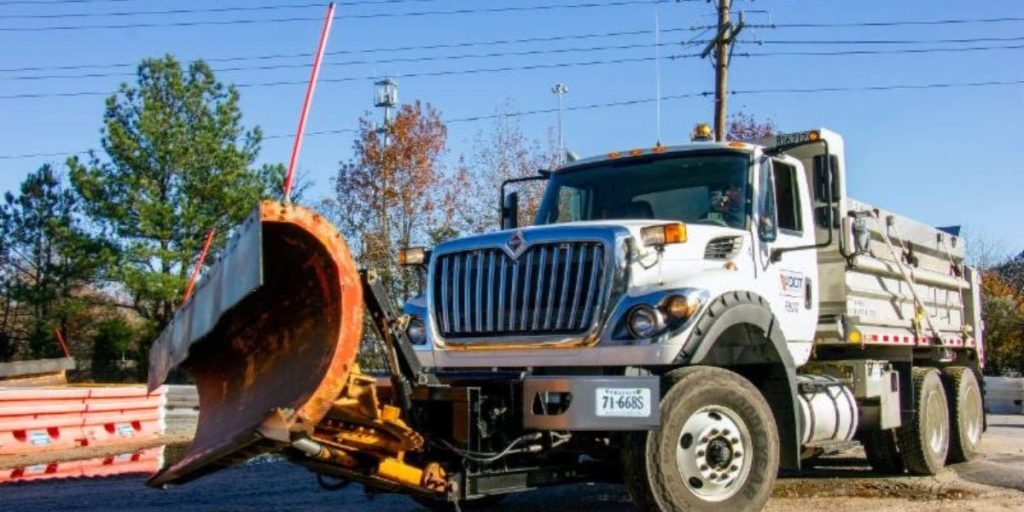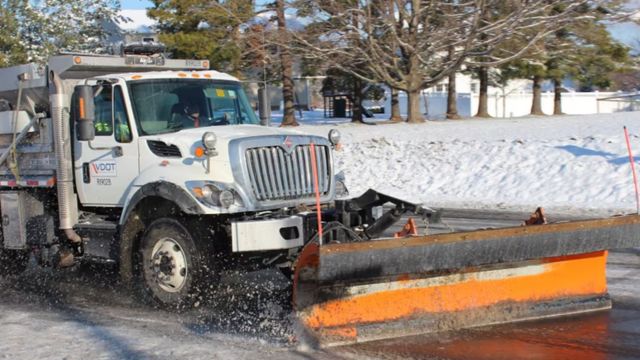
The North Carolina and Virginia transportation departments are advising drivers in the region to be careful if they go out. This is due to freezing temperatures that are hindering the melting of snow and ice, particularly on secondary and country roads in northeastern North Carolina and southeastern Virginia.
The North Carolina Department of Transportation (NCDOT) has requested that people refrain from using roadways in central and eastern North Carolina unless it is absolutely necessary.
“We have significant amounts of snow and slick roads in areas of the state that don’t often see a lot of snowfall,” North Carolina state transportation secretary Joey Hopkins stated. “We’re working hard to clear our interstates and primary roads of snow and ice. … The sunshine will help melt some of this, but as temperatures are likely to remain below freezing for the next few nights, many roads may remain unsafe for travel into the weekend, so please stay home and off the roads if at all possible.”
Since the snow started falling Tuesday, almost 2,000 NCDOT employees and contractors have been reacting with trucks that are outfitted with salt spreaders and snow plows, sweeping snow-covered roadways throughout eastern North Carolina. Until all state-maintained roads are clear, they will keep working in shifts.
North Carolina’s Elizabeth City and Outer Banks regions have been the most severely affected.
Over 953,000 gallons of brine and an additional 15,000 tons of salt have been distributed by NCDOT workers and contractors since the snow started to fall.
In addition to several inches in several eastern locations and more than eight inches in certain coastal areas, North Carolina’s second major winter storm of 2025 brought trace amounts of snow to the Charlotte and Triad areas. The most recent storm did not affect most mountain settlements.

The primary goal of NCDOT is to clear the U.S. and North Carolina highways before moving on to the subsidiary roads with the highest traffic volumes.
On Tuesday and Wednesday, a few NCDOT staff from the western portion of the state loaded their spreader trucks and plows to assist in the more severely affected eastern regions.
NCDOT and its contractors poured 2.8 million gallons of brine on roads prior to the winter storm.
All seven coastal routes were discontinued by the NCDOT Ferry Division on Wednesday; regular operations will resume as soon as it is safe to do so.
Roads in Virginia
While its crews continue to clear shoulders, ramps, and gore areas, and as operations continue on state-maintained principal roads, VDOT said that interstates on the Southside and Peninsula were clear as of 1:30 p.m. Wednesday.
However, until conditions improve much more, VDOT advises drivers to postpone or limit non-essential travel from Wednesday evening through Thursday morning rush hour.
There are isolated patches of snow, ice, or slush on the majority of state-maintained key roadways. It stated that crews will proceed to secondary rounds and subdivision streets after addressing the majority of principal roads, which was expected to occur Wednesday afternoon.
While individual towns are responsible for maintaining their own principal and minor roads, VDOT is responsible for maintaining all interstates, major state-maintained primary routes, and county roads in Hampton Roads.
Virginia State Police reported that between 7 p.m. Tuesday and 11 a.m. Wednesday, the department responded to 67 collisions in Hampton Roads.
“We did see a lot of people just sliding off the roadway. Either hitting a jersey wall or going into the ditch,” Sgt. Michelle Anaya, with Virginia State Police, stated.
If residents must drive, she added, the most crucial thing they can do is to slow down and take it easy.
Freezing Temps Chill NYC’s Rat Population, Leading to Surge in Control Efforts
“Give yourself a lot of space between your vehicle, the vehicle in front of you, and vehicles around you. In case you spin out or somebody else spins out, always have your headlights visible. Make sure they’re free of snow so they can actually see the headlights,” Anaya stated.
VDOT said that temperatures won’t get above 32 degrees until Thursday afternoon, so expect icy conditions, particularly on bridges, overpasses, and shaded places that are prone to freezing first.
Since Tuesday night, VDOT employees have been working 12-hour shifts.



